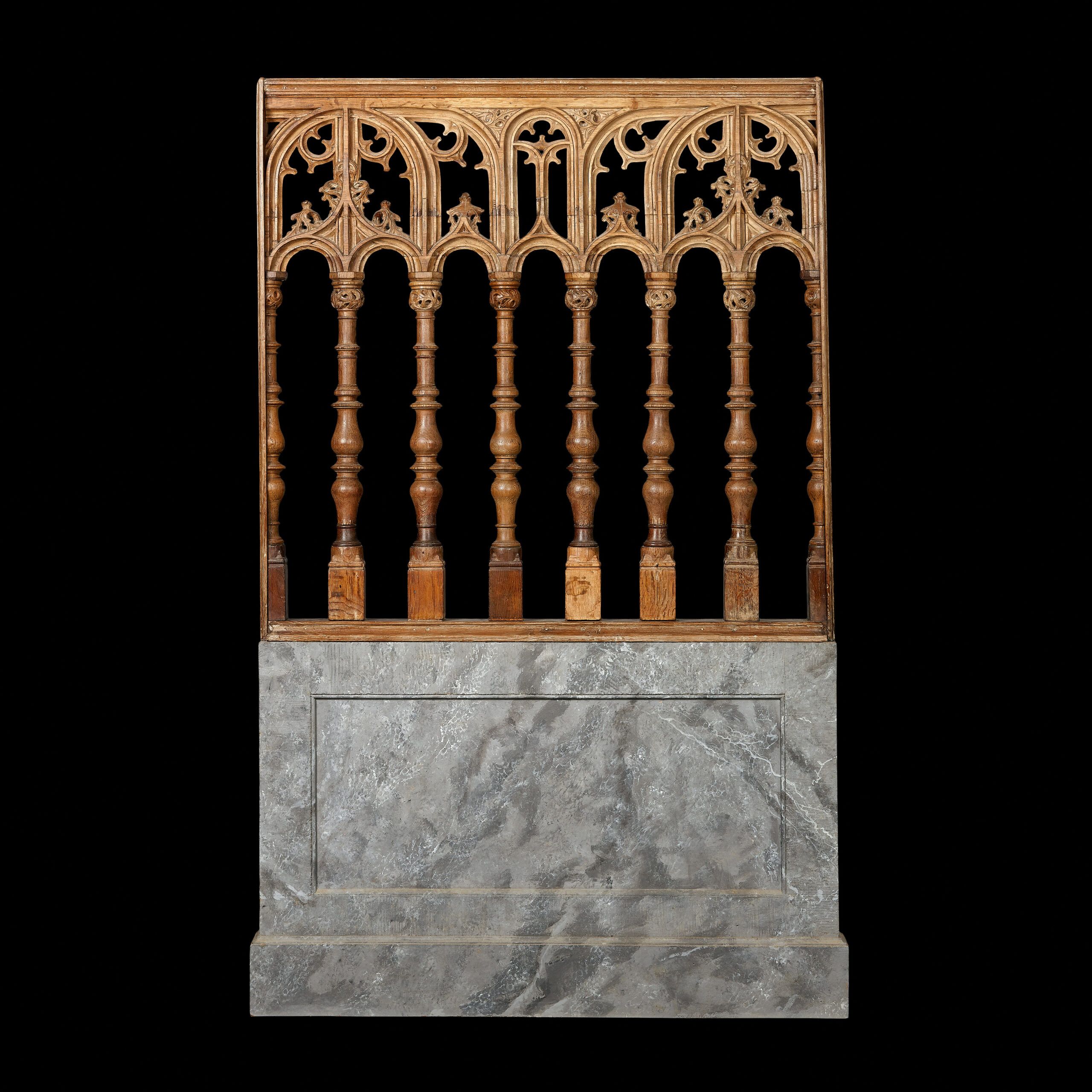Low Countries
Late Gothic | Second quarter of the 16th Century | Ca. 1530
Oak | Carved in full round
H. 198 cm. W. 122 cm. D. 15,5 cm. (including later base)
PROVENANCE
Private collection | The Netherlands
REFERENCE LITERATURE
Toussaint, J. (2005). ‘La basilique Saint-Materne’ In: Le patrimoine médiéval de Wallonie. Namur: Institut du patrimoine wallon, pp. 71-73
CATALOGUE NOTE
This fine oak choir screen consists of eight baluster shaped columns on faceted bases, adorned with floral ornate capitals. They support elaborate tracery, consisting of one single arch in the centre, flanked by two double arches, decorated with crockets. A choir screen – also known in the Low Countries as ‘jubé’ or ‘doksaal’, and in English as ‘rood screen’ – was essential to a medieval church, as an ornate barrier which separated the nave of a church from its choir, and as such the congregation from the clergy. As such, is was a common feature in late medieval church architecture. This partition of more or less open tracery was constructed of wood, stone, or sometimes wrought iron. The choir (or rood) screen was originally surmounted by what in English is known as the ‘Great Rood’, or in Dutch as ‘Triomfbalk’ (‘triumph beam’), supporting a sculptural representation of the Crucifixion, often flanked by the Holy Virgin and Saint John. (In Saxon word ‘rood’ or ‘rode’ means ‘cross’.) More elaborate choir screens could also comprise more sculpture or architectural decoration. In the Low Counties, choir screens were generally removed during the Counter-Reformation, when the retention of any visual barrier between the laity and the high altar was widely seen as inconsistent with the decrees of the Council of Trent (1545-1563).
The tracery shows similarities to that of the upper register of the well-know jubé in the basilica Saint-Materne, also know als the Notre-Dame, in Walcourt, Namur (see fig. 1-2). This fine choir screen in pierre d’Avesnes stone, dated about 1531, was presented to the church by Emperor Charles V, at a time when Flanders was ruled by Spain. As such, stylistically the present choir screen can ben situated in the Low Counties, with an origin in the second quarter of the 16th Century, ca. 1530.

